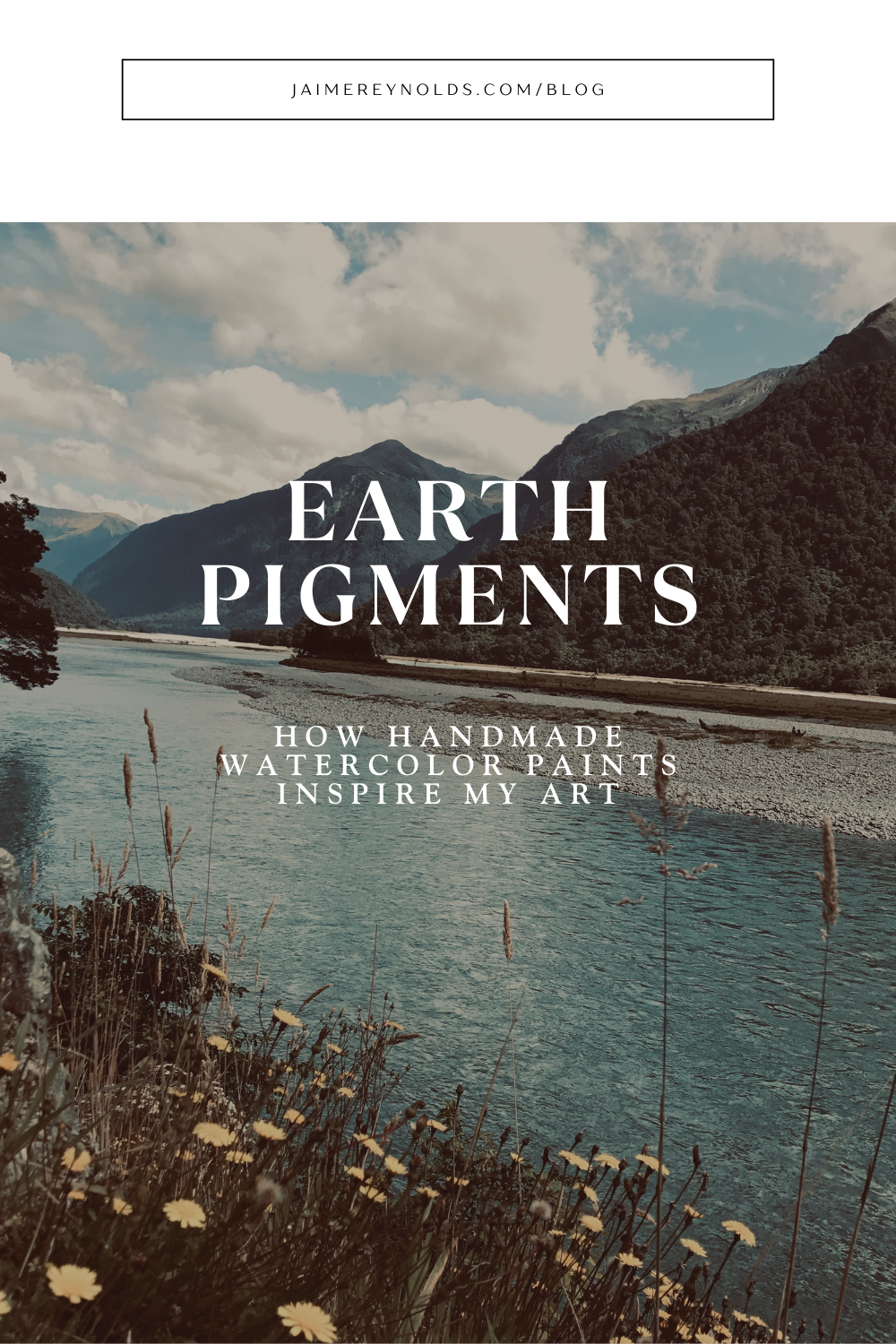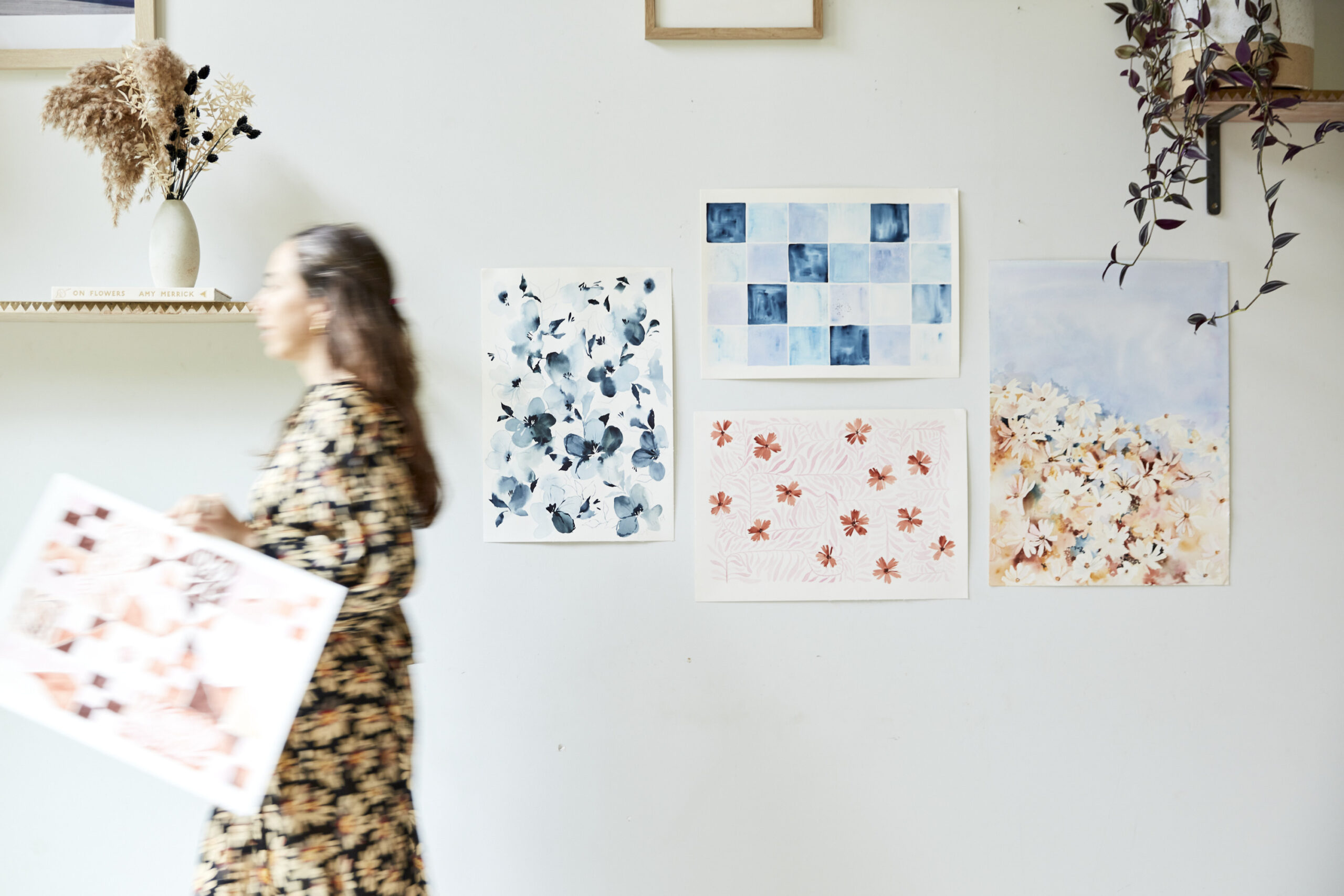Painting with a Sense of Place: How Handmade Watercolor Paints Carry Stories
Every color tells a story. When we paint, we don’t just use pigment—we use history, culture, and the land itself. Handmade watercolor paints, especially those made from earth minerals and natural dyes, hold a connection to place. They come from real landscapes, rich with meaning. Some are gathered from riverbeds, others from stones, plants, or insects. When we use them, we are painting with the earth’s own palette.

The History Behind Handmade Colors
Artists have been making their own paints for thousands of years. Before synthetic pigments, people used what was available in nature. Some of the oldest cave paintings were created with red and yellow ochre, minerals pulled straight from the ground. Ancient Egyptians made vibrant blues from crushed lapis lazuli. The Renaissance saw painters grinding their own pigments, using everything from ground gemstones to botanical extracts.
One of the most fascinating natural pigments comes from cochineal, a tiny insect found on prickly pear cacti. Indigenous cultures in Mexico and South America have used cochineal for centuries to create deep reds. The Spanish brought this dye to Europe, where it became a prized color for fabrics, manuscripts, and paintings. Even today, cochineal is still used in handmade paints for its stunning crimson hue.
Why Handmade Watercolor Paints?
1️⃣ They Connect You to Place
Using handmade watercolor paints feels different. Instead of squeezing color from a tube, you are working with something that comes from the land. A sienna brown may come from Italian soil, while an ultramarine blue could trace back to Afghan mines. These colors hold history and geography within them.
2️⃣ They Have Unique Textures
Mass-produced paints are designed for consistency, but handmade pigments have personality. Earth-based paints often granulate, creating beautiful, organic textures on paper. Some separate in unexpected ways, adding depth and movement.
3️⃣ They Inspire a New Way of Thinking
Handmade watercolor paints encourage a slower, more intentional practice. Because they behave differently than synthetic colors, they invite experimentation. They remind us to embrace imperfections, to let the materials guide us, and to trust the process.
** Looking for more about earth pigments? Check out this post on why I choose handmade watercolors.
Spotlight on Beam Paints
One of the most inspiring handmade paint makers is Beam Paints, an Indigenous-owned company founded by Anong Beam, an artist from the M’Chigeeng First Nation. Beam Paints creates watercolors from earth and mineral pigments, blending traditional knowledge with modern craftsmanship. Their paints are not only beautifully pigmented but also deeply rooted in cultural heritage.
Anong Beam grew up watching her father grind his own pigments and stretch canvases, learning from a young age that art is a holistic process. Today, Beam Paints continues that tradition by using sustainably gathered materials and packaging their paints in biodegradable, plastic-free containers. The brand’s dedication to honoring the land is evident. It creates high-quality materials. This approach is a perfect example of how handmade paints carry both history and responsibility.
Bringing It All Together
Handmade paints remind us that art is more than just an image—it’s an experience. They connect us to history, to landscapes, and to the artists who came before us. When we use them, we paint with more than color. We paint with story, place, and tradition.
Want to learn more about how different pigments hold up over time? Check out my lightfast watercolor guide here. If you’re looking for my favorite handmade supplies, grab my Ultimate Watercolor Supply Guide here.




